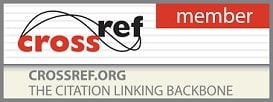- Multidisciplinary Journal
- Printed Journal
- Indexed Journal
- Refereed Journal
- Peer Reviewed Journal
ISSN Print: 2394-7500, ISSN Online: 2394-5869, CODEN: IJARPF
IMPACT FACTOR (RJIF): 8.4
Vol. 4, Issue 5, Part G (2018)
Effectiveness of foot and hand massage on postoperative pain, anxiety and selected physiological parameters among postoperative open heart surgery patients in cardiothoracic intensive care units of selected hospitals of Mangaluru
Effectiveness of foot and hand massage on postoperative pain, anxiety and selected physiological parameters among postoperative open heart surgery patients in cardiothoracic intensive care units of selected hospitals of Mangaluru
Author(s)
Abstract
Background: Cardiac surgeries, such as coronary artery bypass grafting and valve replacement rank among the most frequently performed surgical interventions worldwide and necessitate the routine admission of patients to the ICU. Physical and psychological symptoms such as postoperative pain and anxiety will be persisting in patients who undergo major event such as open heart surgery. Massage is a therapy in which there is manual manipulation of muscles and soft tissues of the body through the application of various systematic and rhythmic hand movements which influences a person physiologically, psychologically during the treatment of illness.
Background: Cardiac surgeries, such as coronary artery bypass grafting and valve replacement rank among the most frequently performed surgical interventions worldwide and necessitate the routine admission of patients to the ICU. Physical and psychological symptoms such as postoperative pain and anxiety will be persisting in patients who undergo major event such as open heart surgery. Massage is a therapy in which there is manual manipulation of muscles and soft tissues of the body through the application of various systematic and rhythmic hand movements which influences a person physiologically, psychologically during the treatment of illness.
Methodology: An experimental research approach was adopted for the study. Purposive sampling technique was used to select the study subjects. Data was collected by using Demographic and Clinical Proforma, Numeric Pain Scale, Faces Anxiety Scale, Six item Short Form of State Trait Anxiety Inventory and Physiological Parameter Checklist. Pre-test was conducted before half an hour of intervention (massage) in the morning and evening on day 1, day 2 and day 3. Intervention was given for a period of 20 minutes after the pre-test. Post-tests were conducted at 30 mins and 60 mins after the intervention in the morning and evening on day1, day2 and day 3.
Results: There was a significant difference between the pre-test and post-test scores of pain (F=2.92, p<0.05) between the experimental and control group. There was a significant difference in the post-test scores of pain (post-test1, t=2.81, post-test 2- t=4.03), p<0.05 in day 1 evening (post-test 2, t=3.84, p<0.05), day 2 morning (post-test 2, t=5.14, p<0.05), day 3 morning, (post-test 1, t=5.202, p<0.001), (post-test2, t=2.18, p<0.05) and day 3 evening (post-test1, t=5.68, post-test 2, t=6.25, p<0.001). Significant difference was found in the pre-test and post-test anxiety score (F = 2.92, p<0.05) in the experimental group compared to control group. There was significant difference in the post-test 2 scores of anxiety on day 2 (Morning: t=3.270, Evening: t=2.825, p<0.001), day 3 morning (post-test 1, t=2.466, p<0.05), (post-test 2, t=4.172, p<0.001) and day 3 evening (post-test 2, t=4.987, p<0.001).Also significant difference in post-test anxiety scores on day 1 (morning: post-test 2, t=2.990, evening: post-test 2, t=2.781, p<0.001), Day 2 morning (post-test 2, t=2.950, p<0.001) using six item short form of state anxiety inventory. There was a significant difference in the post-test 2 scores of respiratory rate on day 2 morning (t=3.120, p<0.001), evening (t=3.237, p<0.001) and in the post-test2 scores on day 3 (morning: t=3.159, p<0.001, evening: t=2.598, p<0.05). Significant difference was found in the post-test 1 scores of heart rate on day 1 (morning: t=2.818, p<0.05, evening :t=2.65, p<0.05) There was no association of pre-test scores of pain, anxiety and selected physiological parameters with demographic variables.
Conclusion: The findings of the study demonstrated that foot and hand massage was effective non-pharmacological methods to reduce pain and anxiety in postoperative open heart surgery patients. Providing complementary therapies like foot and hand massage to open heart surgery patients will significantly reduce pain and anxiety level.
Pages: 461-474 | 1055 Views 168 Downloads

How to cite this article:
Jonita Wilma Rodrigues, Dr. Larissa Martha Sams. Effectiveness of foot and hand massage on postoperative pain, anxiety and selected physiological parameters among postoperative open heart surgery patients in cardiothoracic intensive care units of selected hospitals of Mangaluru. Int J Appl Res 2018;4(5):461-474.






 Research Journals
Research Journals